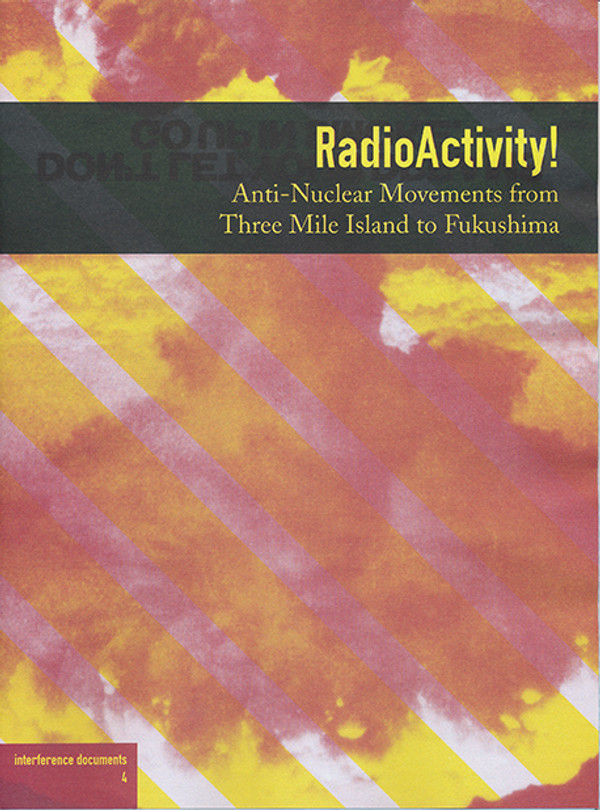RadioActivity! Antinuclear Movements from Three Mile Island to Fukushima
By Interference Archive
Brooklyn, NY, 2012
Pages: fold out map
Dimensions: 7.75" x 10.5" as folded booklet, 31.5" x 21.5" as unfolded map
Cover: none
Binding: none
Process: offset
Color: full color
Edition size: 1000
ISBN: none
It's great to see that the recently launched Interference Archive in Brooklyn is now producing excellent printed publications in addition to all else they do. But as a group that's affiliated with the hyperactive Justseeds collective, was there even any doubt? Here is their description of this poster booklet:
"In October 2012 the Interference Archive collaborated with the activist and research group Todos Somos Japon to produce the exhibition "RadioActivity! Antinuclear Movements from Three Mile Island to Fukushima." The exhibit featured over 100 pieces of antinuclear movement culture (posters, photographs, buttons, t-shirts, patches, banners, and publications) from the 60s, 70s, and 80s, as well as the contemporary culture developing as part of the protest movement in Japan post-Fukushima.
This booklet/map is the inaugural publication in Interference Archive's "Interference Documents" publication series, designed to coincide with exhibitions and activities at the Archive while also being able to exist on their own.
This booklet contains information about the "RadioActivity!" exhibition, 26 short texts about the history of nuclear power ans the movements against it, and 9 images of antinuclear posters and publications featured in the show. It also folds out into a large scale map of the nuclear facilities in the US and Canada, which is intended to be a tool for antinuclear activists to use today."
"Interference Archive explores the relationship between cultural production and social movements. This work manifests in public exhibitions, a study and social center, talks, screenings, publications, workshops, and an online presence. The archive consists of many kinds of objects that are created as part of social movements by the participants themselves: posters, flyers, publications, photographs, books, T-shirts and buttons, moving images, audio recordings, and other materials. Through our programming, we use this cultural ephemera to animate histories of people mobilizing for social transformation."


